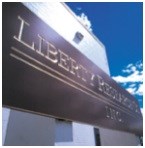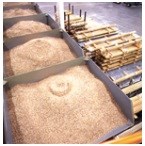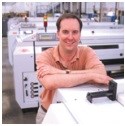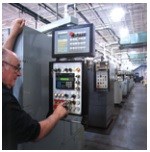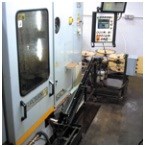Stepping Out Of The Comfort Zone
Taking the BIG step that radically changes the way you do things is not for the faint of heart. It requires more than just a leap of faith. It requires hard work, thorough research and selecting technology that works so well you needn't think about that step once taken.
Share








Hwacheon Machinery America, Inc.
Featured Content
View MoreIt used to be good enough to produce a quality product at a fair price and deliver it in a timely fashion. But that was then, and this is now. And the old model no longer applies because everything changes. Competitors appear from seemingly nowhere—and everywhere. Technology races ahead often faster than one can track. And what was "good enough" just isn't good enough anymore. In fact, companies that employed "good enough" as a business strategy are, more likely than not, not in business today.
Liberty Research (Gonic, New Hampshire), founded in 1957, developed an expertise in building secondary machines and then evolved into a successful New Britain screw machine house. However, four to six years ago the company came to a critical strategic turning point.
"It was a classic case," says Derrick Perkins, president. "It was comfort zone versus unknown zone. Stay where we were, doing what we knew, or take a risk and change."
The Dilemma, The Decision
Mr. Perkins says the company carefully assessed its situation, including its current machines, which were beginning to show significant signs of age. The New Britains were all 40-some years old and had been rebuilt, again and again. The decision came down to going out and buying rebuilt New Britains and, thus, remaining in a comfort zone. . . or making a change—in the way the company worked, the way it thought of itself and the way it viewed its customers.
"After all," Mr. Perkins says, "we were familiar with New Britains. We'd been running them for 40 years and understood their quirks." Plus, the company's early experience in building machines, which had always served it well, further assured it that it could make rebuilt New Britains run—probably for a good many years.
"On the other hand," Mr. Perkins says, "we could step out of our comfort zone and adopt new technology, technology that would allow us to continue doing many of the things we were used to but would also take us into the future—a future that was somewhat uncharted and unfamiliar."
And in this, he says, there was a certain amount of anxiety. Yet, after some hard-nosed reflection, the company elected to take the latter route. A factor that played a significant part in the company's decision was, as Mr. Perkins puts it, the "you can pay for it now, or you can pay for it later" theory.
Translated, this means one can pay now, as in take out a loan and invest in new equipment. Mr. Perkins notes that at today's interest rates, one can borrow at about 5 percent, which means that for approximately $50,000 a year one can pretty easily put a million dollars' worth of new equipment on a plant floor.
"The point," Mr. Perkins says, "is that with the pay-now approach, the payments at some point stop. However, if we elected to pay later, and continue to use the type of machines that we were using, we realized that we'd be literally paying every single day—through downtime, labor, late deliveries, quality problems and with the potential of losing business hanging over our heads."
Mr. Perkins says this seemed to be a sure way to lose market share, not gain it. Then, too, the company had to think about its competitors, those who've elected to pay now. What does this mean to them? It means they garner new customers—with a good chance of some of these possibly being Liberty's. Suddenly, what appeared to be a comfort zone looked more like an idle zone, a position of no movement, no progress and more than likely a loss of ground to competitors who were aggressive and more interested in controlling their future than letting the future control them.
So, the choice seemed clear, and having made the decision, Mr. Perkins says, the company now carefully researched the lathe market. The company weighed the advantages and benefits of one manufacturer against those of others. It looked
at just about every manufacturer of multispindle cam machines, and investigated the ancillary equipment market as well. The result was that the company began buying European lathes—specifically, Euroturns and Shüttes.
Mr. Perkins adds that he believes his company was one of the first in the United States to seriously consider Euroturn lathes—a decision the company has never looked back on. Also, as a result of a thorough review of the marketplace, Liberty Research became one of the earliest advocates of coupling automated bar feeders to lathes. The bar feeder of choice: IEMCA (St. Louis, Missouri), specifically, IEMCA SIR 25 automatics.
Reliability, Productivity . . .
Mr. Perkins' advocacy of bar feeding systems stems from a simple observation. "One thing we noted early on in our experience with bar feeders," he says, "was that the bar feeders proved a lot more reliable than the lathes. We put our first bar feeds on New Britains, which was a large factor prompting us to go with Euroturns and Shüttes."
Also quickly noted was a tremendous boost in productivity. "The average productivity per machine increased 30 percent," he says. "We also found that with the new bar feeders we could actually run our Euroturns 20 percent faster than, say, with a stock reel on the machine."
Mr. Perkins says that this is due primarily to technical features in the IEMCAs. Each pusher, for example, is equipped with a steel collet with a polyurethane core that grips the bar very securely during machining. Also, the hydrodynamic effect of a constant flow of oil directly into the guide channel provides continuous stability of the rotating bar.
"In effect, what the feeders allow us to do," Mr. Perkins says, "is take an already fast machine and run it 20 percent faster than normal—without any additional machine vibration and no degradation of machined-part quality."
He also points out that with the addition of bar feeders his operators were able to run four to five machines rather than just two to three. Not only was Liberty Research immediately more productive, the company was also able to make better use of its workforce.
. . . And Assurance
However, there was a worrisome side to all this apparent positive change. Mr. Perkins reminds us that the Liberty Research workforce of some 35 was accustomed to building secondary operation machines and running New Britains. Now, suddenly there appeared new automated bar feeders and European lathes. The anxiety that accompanies change isn't always limited to the strategic decision-making level, Mr. Perkins points out. There is a very real impact on the shopfloor employee, too.
When things began to change, Mr. Perkins says, the company took steps to assure workers that no one in the company would be laid off due to productivity increases resulting from investing in new technology. "You can imagine the first thing people thought when the new lathes arrived," he says. "`Well, there goes half our jobs.' So we assured them that new technology would not result in reduced jobs but would result in increased corporate growth."
In fact, Mr. Perkins notes that not only would workers be retained in the face of new technology, but precisely because of the new technology—in particular the automatic bar feeders—workers could now do other things that they previously could not do, or did not have the time to explore.
"We began a training program, training and retraining people who seemed to be good candidates, either because of mechanical aptitude or inclination, or perhaps a demonstrated sense of attention to detail," says Mr. Perkins. "We began to change the job content of many of our workers. Some became machine troubleshooters. Others began doing statistical analysis and inspection. They began to grow in new ways and to see themselves differently. And most really embraced the training initiative. After all, few people have a career goal of showing up at work and shoving bars into a lathe all day. Most people want to be challenged. And this was further proof that we were serious when we said we were going to grow together, and that technology was going to open the door, in more ways than one."
Proof In Numbers
As a multispindle cam house, the niche that Liberty Research occupies is primarily high volume—jobs of 500,000 parts or more—and, thus, the need for cam machines that can make parts to close tolerances in two-second cycles is critical. Equally critical in the volume decision equation is a reliable bar feeder.
"We have to be absolutely certain on volumes of this size," Mr. Perkins says, "that we can deliver what we promise, which means we have to have absolute confidence in the reliability of our equipment. We now run 24 hours a day, five days a week, and next year we'll be running 24 hours, seven days a week."
According to Mr. Perkins, the markets Liberty Research serves are primarily
the fiber optic and radio frequency (RF) industries, some aerospace sectors and automotive. Basic turned materials include aluminum, brass and steel, with
the heaviest emphasis on brass. Typical jobs include large coupling nuts,
machined connectors, bodies and collars, and terminals and parts for
insert molders in the automotive field.
This year," Mr. Perkins says, "we're moving into automotive very aggressively. Since the decision to adopt new technology, we've grown about 600 percent in sales in six years—from $1 million to $6 million."
This all goes back to the decision to break out of a comfort zone and take a risk. "Sure, this was not an easy step for us," he says, "and one that at times was fraught with worry. But it's paid off. Our goal now is to double in size over the next four to five years. And from the feedback we're getting from some of our customers, that goal may be a little on the conservative side."
Meeting Goals...With Technology
One of the keys in achieving ambitious goals—as in penetrating high-volume, high-pressure, fiercely competitive markets like automotive—is being able to deliver what your competitor would like to deliver but cannot.
"Set up the way we are now," Mr. Perkins says, "with nine Euroturns and three Shüttes and IEMCA automatic feeders, we're in a very competitive position to go after higher and higher volume jobs. We get 1.2 million parts a week, for example, out of six bar feed machines, and that's how we intend to grow—by employing high-end, high-efficiency equipment, and by making it even more efficient by coupling it with automatic bar feeders."
Mr. Perkins points out that where his competitors might bid on a high-volume job and make the part on three or four machines in order to keep up with the volumes, Liberty Research is able to run as many as a million parts per month per machine. "We're able to dedicate machines to jobs and turn parts out 24 hours a day. So, where a good many screw machine shops get a small percentage of the jobs they bid on, we get a majority, which we can only attribute to our investing in new technology," says Mr. Perkins.
"It may seem odd," he says, "but we can offer better pricing while running machines that cost 300 percent to 400 percent more than some other lathes." However, the fact is, the new lathes are 300 percent to 400 percent more accurate and, when coupled to automated bar feeders and run 24 hours a day, result in a level of performance that lets them offer customers extremely high quality, at extremely low prices, with on-time delivery—every time. This, Mr. Perkins says, translates to a real competitive advantage, resulting in measurable advances in market share.
"At the end of the day," Mr. Perkins says, "it becomes pretty clear how important automated bar feeding and reliable, precision lathes are to a competitive marketing strategy."
The Changing Role Of The Customer
Just as advanced technology brings about change, other elements of the business paradigm are undergoing change as well. Mr. Perkins suggests that the role of the customer today is vastly different than just a few years ago. Customers today, he says, are increasingly involved with their suppliers. They don't hesitate to show up at a supplier's door. They want to know not only that a shop can do the job—to their quality expectations and on time—but also they want to know how the job is going to be done. They want to assess for themselves a company's technology, capabilities, processes—even its housekeeping practices.
"It's not unusual for us to average a customer a week through our plant," Mr. Perkins says. "And they're genuinely interested in the facility and equipment, in how their parts are going to be made and how well organized and clean the environment is. We're very conscious about how we appear. We work very hard on housekeeping, to the point that the floors are mopped at the end of each shift."
A Simple Philosophy
Stepping out of the comfort zone was the best move Mr. Perkins ever made for his company. Good technology with a capable staff has helped create a new comfort zone for this successful shop.
About the author: Len LaPasso is the national sales manager for the multispindle group of Iemca.
Related Content
4 Steps to a Cobot Culture: How Thyssenkrupp Bilstein Has Answered Staffing Shortages With Economical Automation
Safe, economical automation using collaborative robots can transform a manufacturing facility and overcome staffing shortfalls, but it takes additional investment and a systemized approach to automation in order to realize this change.
Read MoreHow to Accelerate Robotic Deburring & Automated Material Removal
Pairing automation with air-driven motors that push cutting tool speeds up to 65,000 RPM with no duty cycle can dramatically improve throughput and improve finishing.
Read MoreCutting Part Programming Times Through AI
CAM Assist cuts repetition from part programming — early users say it cuts tribal knowledge and could be a useful tool for training new programmers.
Read MoreIncreasing Productivity with Digitalization and AI
Job shops are implementing automation and digitalization into workflows to eliminate set up time and increase repeatability in production.
Read MoreRead Next
5 Rules of Thumb for Buying CNC Machine Tools
Use these tips to carefully plan your machine tool purchases and to avoid regretting your decision later.
Read MoreRegistration Now Open for the Precision Machining Technology Show (PMTS) 2025
The precision machining industry’s premier event returns to Cleveland, OH, April 1-3.
Read MoreBuilding Out a Foundation for Student Machinists
Autodesk and Haas have teamed up to produce an introductory course for students that covers the basics of CAD, CAM and CNC while providing them with a portfolio part.
Read More






















.png;maxWidth=150)




